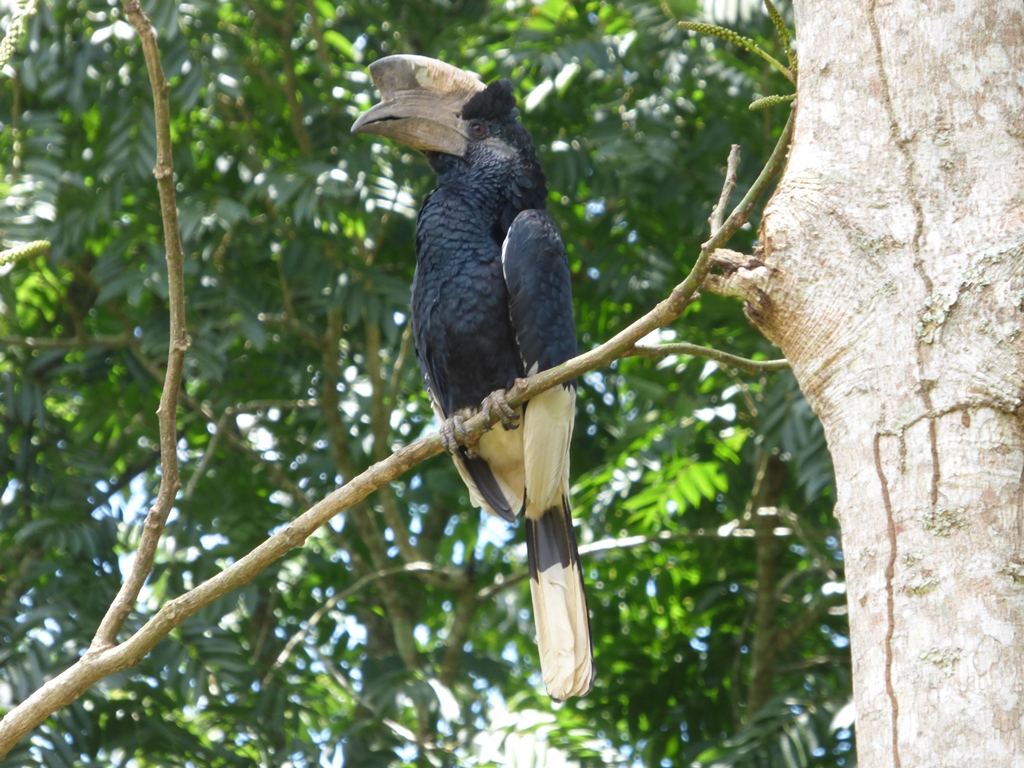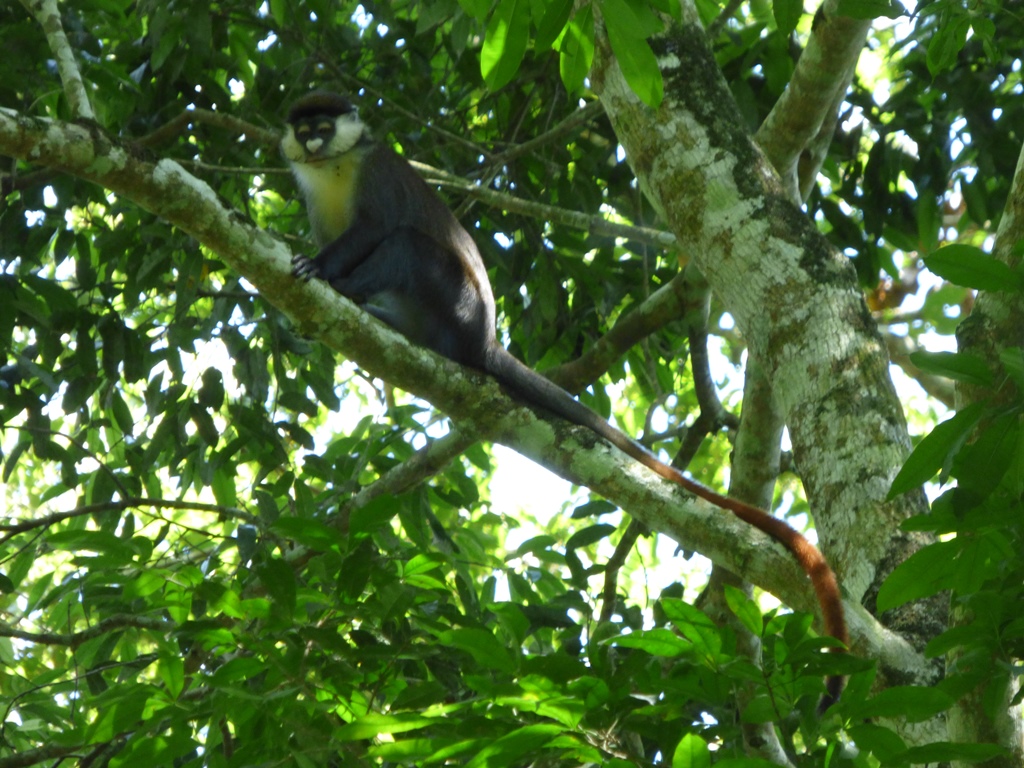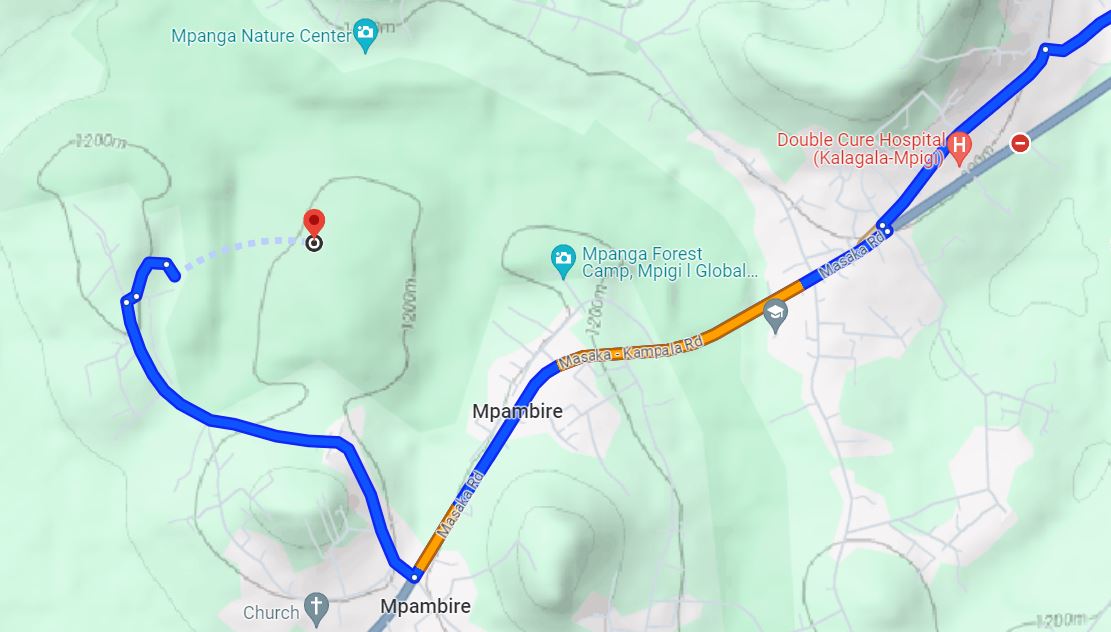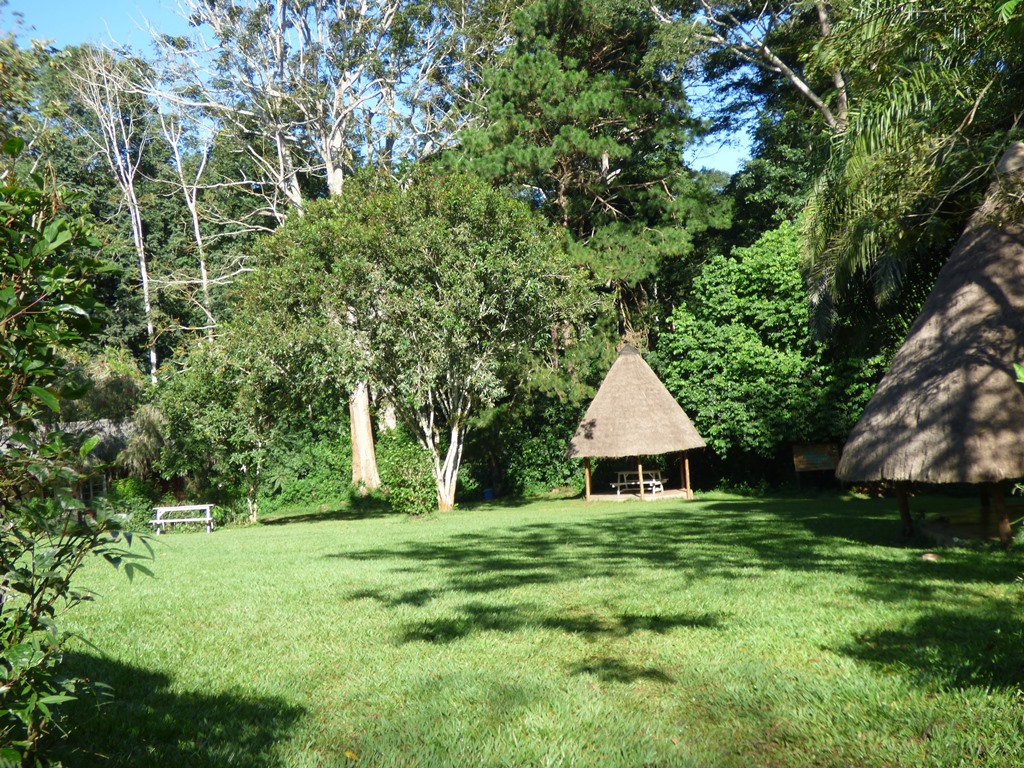Uganda parks & attractions
Mpanga Forest Reserve
Mpanga Forest is a small patch of natural equatorial rainforest covering about 453 hectares. It is found in Mpigi District, Mawokota – 37 kilometers southwest of Kampala and is conveniently located along the Masaka highway. The forest can be reached within an hour of driving from Kampala.
Mpanga forest is wonderful getaway for nature lovers!
It supports an impressive biodiversity for such a small forest! It has 500 species of trees and shrubs, 300 species of birds, 97 butterflies, and 112 moths. Three species of monkeys can be seen in the forest including vervet, red-tailed and black-and-white colobus monkeys. There is also a number of small mammals including banded mongoose, squirrels, pottos, pangolines and bushabies. If you spend a night at Mpanga Forest you have a chance of spotting the rare nocturnal pottos and bushbabies.
The dominant tree species in Mpanga Forest is the hard and weather resistant Celtis. Mpanga Forest is surrounded by a community of traditional drum makers who look for the soft trees that are suitable for the drum making, and therefore the undesirable hard Celtis trees have so much saved the forest from exploitation by the drum makers. The communities however do still depend on the forest for firewood, charcoal and medicinal hubs.

adventure and sightseeing
Things to do at Mpanga Forest
Birding

Mpanga Forest is one of the Uganda birding spots nearest to Kampala and it is very productive for forest species. A birding day at Mpanga Forest starts at the cleared visitors’ information center area (cleared ground) at the edge of the forest. This area provides plenty of birds that are observed in the forest edge and in flight. After the visitors’ center area you will enter the forest taking a clear walking trail. The well maintained trail runs the entire length of the forest and ends at a water stream which is said to host the Shoebill sometimes, and offers many other water species. It can take up to three hours to bird at the entire trail and you will be rewarded with over 50 bird species.
The clear trail also means you can go birding in Mpanga forest unguided and not be worried about getting lost. Otherwise a local site guide is available that knows all the resident species here and even their calls!
After birding in the forest you can go into the surrounding cultivations which will provide plenty of garden species.
Some of the notable birds you will observe at Mpanga Forest include: Long-tailed Cormorant, Cattle Egret, Black-headed Heron, Purple Heron, Hadada Ibis, Egyptian Goose, Black Kite, Palmnut Vulture, Lizard Buzzard, African Harrier-Hawk, Wahlberg’s Eagle, Crested Guineafowl, White-spotted Flufftail, African Green-Pigeon, Red-eyed Dove, Grey Parrot, Great Blue Turaco, Red-chested Cuckoo, Diederik Cuckoo, Klaas’s Cuckoo, Yellowbill, African Palm Swift, White-rumped Swift, Speckled Mousebird, Pied Kingfisher, White-breasted Nigrofinch, Woodland Kingfisher, Shining-blue Kingfisher, Blue-breasted Kingfisher, Crowned Hornbill, African Pied Hornbill, Black-and-white-casqued Hornbill, Yellow-throated Tinkerbird, Yellow-fronted Tinkerbird, Yellow-crested Woodpecker, African Shrike-flycatcher, Narina Trogon, Lesser Striped Swallow, African Pied Wagtail, Yello-throated Longclaw, Western Nicator, Common Bulbul, Little Greenbul, White-headed Sawwing, Winding Cisticola, Tawny-flanked Prinia, Black-and-white Shrike-flycatcher, Fire-crested Aleth, Red-tailed Bristilebill, Black Cuckoo, Bronze Sunbird, Copper Sunbird, Green-headed Sunbird, Superb Sunbird, Scarlet-chested Sunbird, Variable Sunbird, Bronze Mannikin, Splendid Starling, Rupell’s Long-tailed Starling, Grey-headed Sparrow, Black-headed Weaver, Brown-capped Weaver, Weyns’s Weaver, Vieillot’s Black Weaver, Red-headed Malimbe, Grey-headed Negrofinch, Purple Stirling, Pin-tailed Whydah, Western Citril, Diederik Cuckoo, Compact Weaver, Yellow-fronted Canary.
Another birding hotspot for forest species that can be easily accessed from Kampala for a day of birding is the more popular Mabira Forest Reserve
Note that a day of forest birding in Mpanga Forest can be a combined with wetland/water birding in Mabamba Swamp famous for the Shoebill and great for water birds, as both spots are located in the same direction and are about 30 minutes drive in between
Forest Walk

You can do a day trip to Mpanga Forest and set out on a beautiful walk under the cool forest canopies and get to observe various species of trees, monkeys, butterflies and colorful birds. You can also spend an overnight there and do a nocturnal walk in the forest and search for the rare nocturnal elements such as the bushbabies and potto. There is a cleared camping ground near the trail head into the forest, as well as accommodation in neat and affordable eco cottages!
Accommodation in Mpanga Forest
There are neat eco cottages that are affordable. Cleared camping grounds are also available for own camping.
How to get to Mpanga Forest

You can easily get to Mpanga by public means. Go to the New Taxi Park and take a mini-bus (taxi) heading to Mpigi. There are taxi touts shouting out for passengers and these can help direct you to the right tax. You will be offloaded at the signage of Mpanga Eco Tourism Site and it is only about 1km from here, on a dirt road to the forest and this you walk it or take a motor cycle ride (bodaboda).





